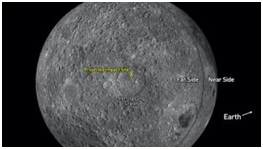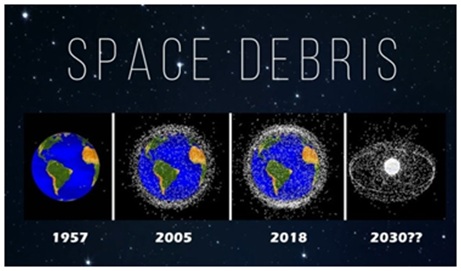

3rd March 2022 (9 Topics)
Context
The moon is about to get walloped by 3 tons of space junk.
About
Why in news?
- On 4 March, humanity will set a record for littering when an old rocket booster smashes into the far side of the Moon.
- It will be the first time a piece of human-made space debris has hit a celestial body other than Earth without being aimed there.
- The moon is about to get walloped by 3 tons of space junk, a punch that will carve out a crater that could fit several semitractor-trailers.
- The leftover rocket will smash into the far side of the moon at 5,800 mph (9,300 kph).
- The booster is probably part of a rocket that launched a small Chinese spacecraft, called Chang’e 5-T1, towards the Moon in 2014.
- Although Chang’e 5-T1 returned to Earth successfully, the booster is thought to have been zipping around chaotically in space ever since.
- Lunar gravity is now drawing it close, and will soon pull it into a fatal collision with the far side of the Moon.
- The smash-up is expected to produce a puff of debris and leave behind a small crater.

Impact:
- Scientists expect the object to carve out a hole 33 feet to 66 feet (10 to 20 meters) across and send moon dust flying hundreds of miles (kilometers) across the barren, pockmarked surface.
- The Goldstone Solar System Radar near Barstow, California, is set to observe the object a few days before impact.
- NASA's Lunar Reconnaissance Orbiter (LRO) will look for changes in the moon's exosphere, a very thin layer of gases due to the crash and then later scan the lunar surface for the impact crater itself.
About Space Debris:
- Space junk is any piece of machinery or debris left by humans in space—principally in Earth orbit.
- These include dead satellites, fragments of rocket bodies and spacecraft etc.
Kessler syndrome:
- This is an idea proposed by NASA scientist Donald Kessler in 1978.
- It says if there is too much space junk in orbit, it could result in a chain reaction where more and more objects will collide and create new space junk in the process, to the point where Earth's orbit became unusable – a Domino Effect.
- 12 fragmentation events have already taken place every year for the past two decades.

|
Initiatives taken to tackle the problem:
|
|
ISRO’s efforts: Netra:
|


